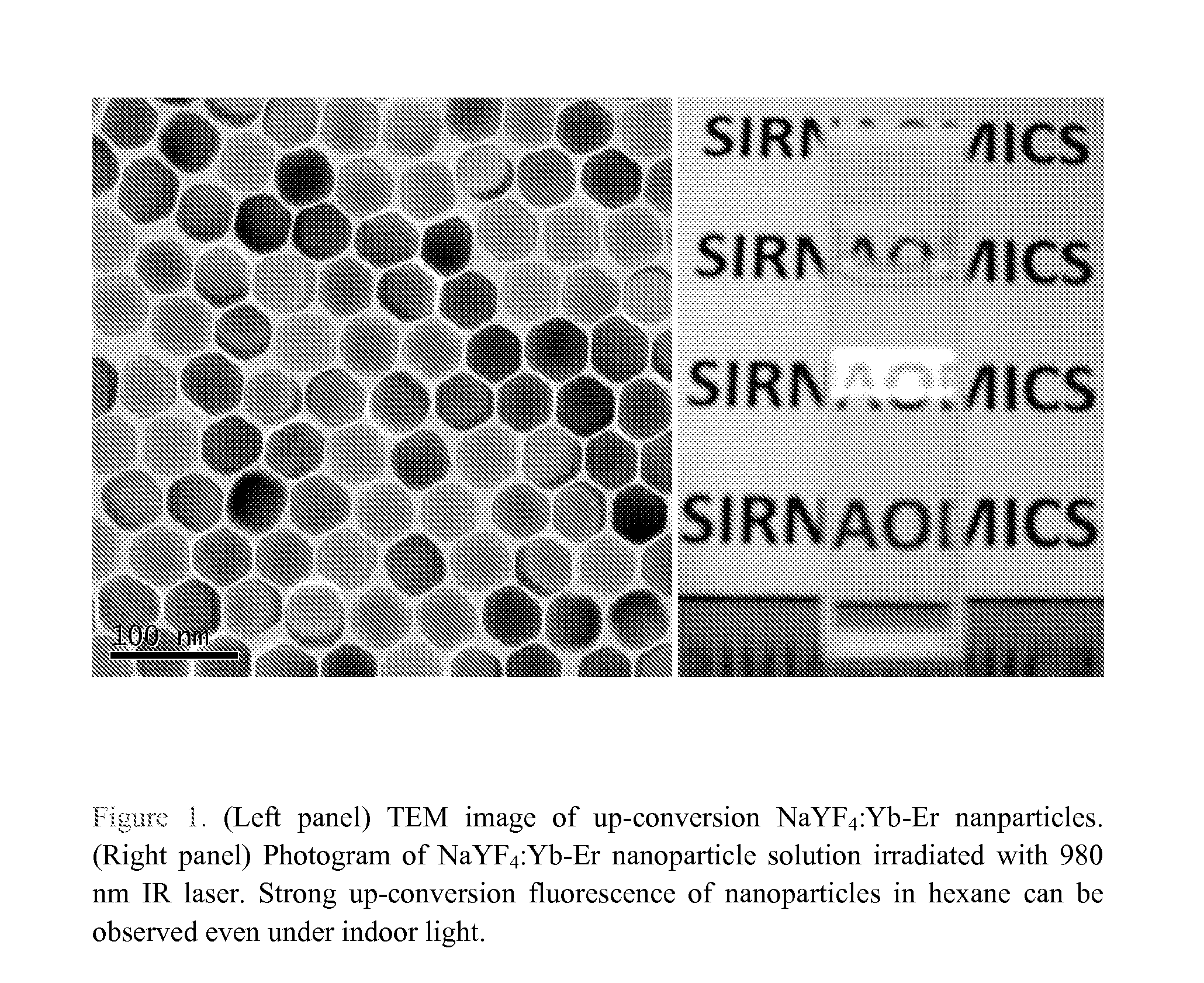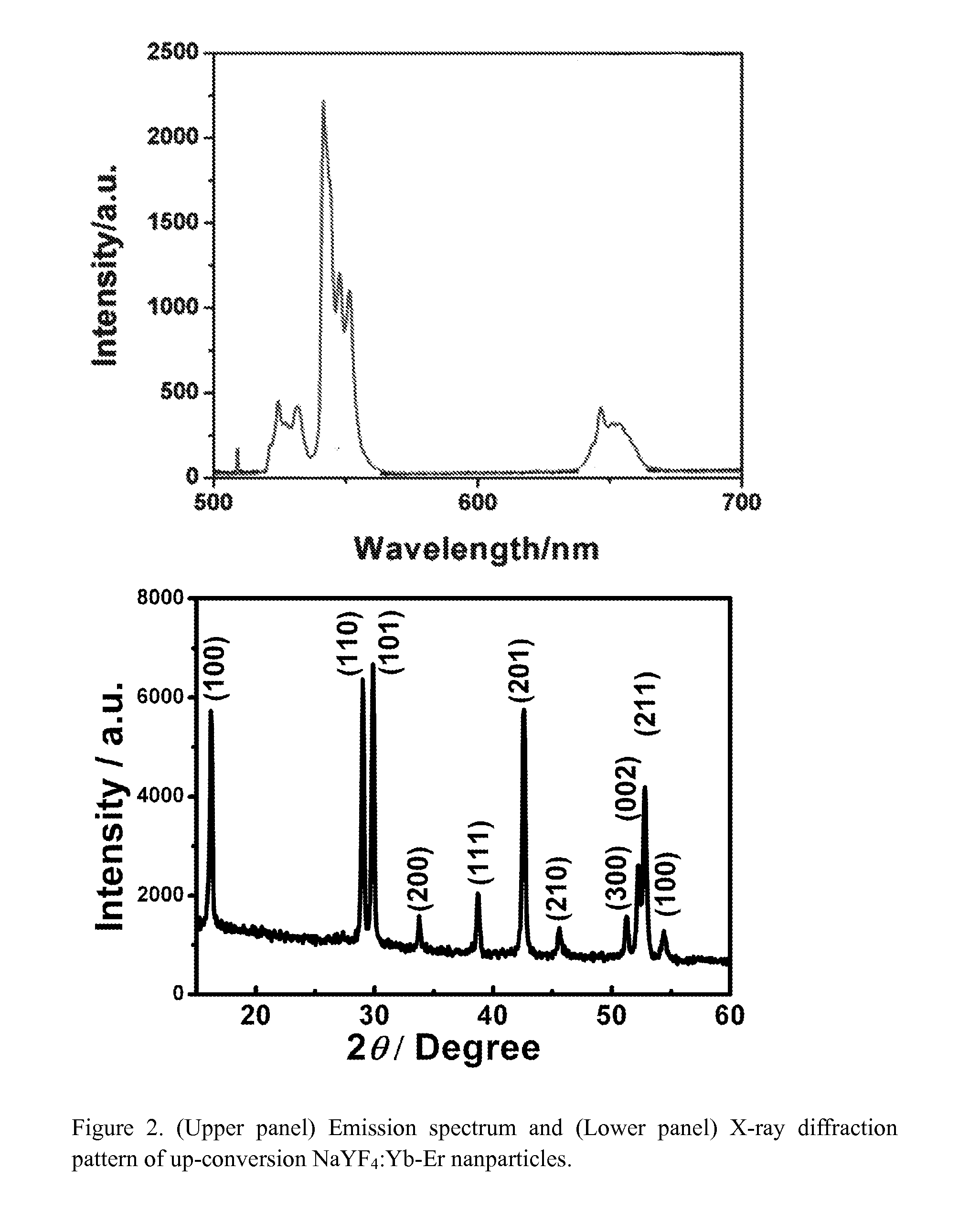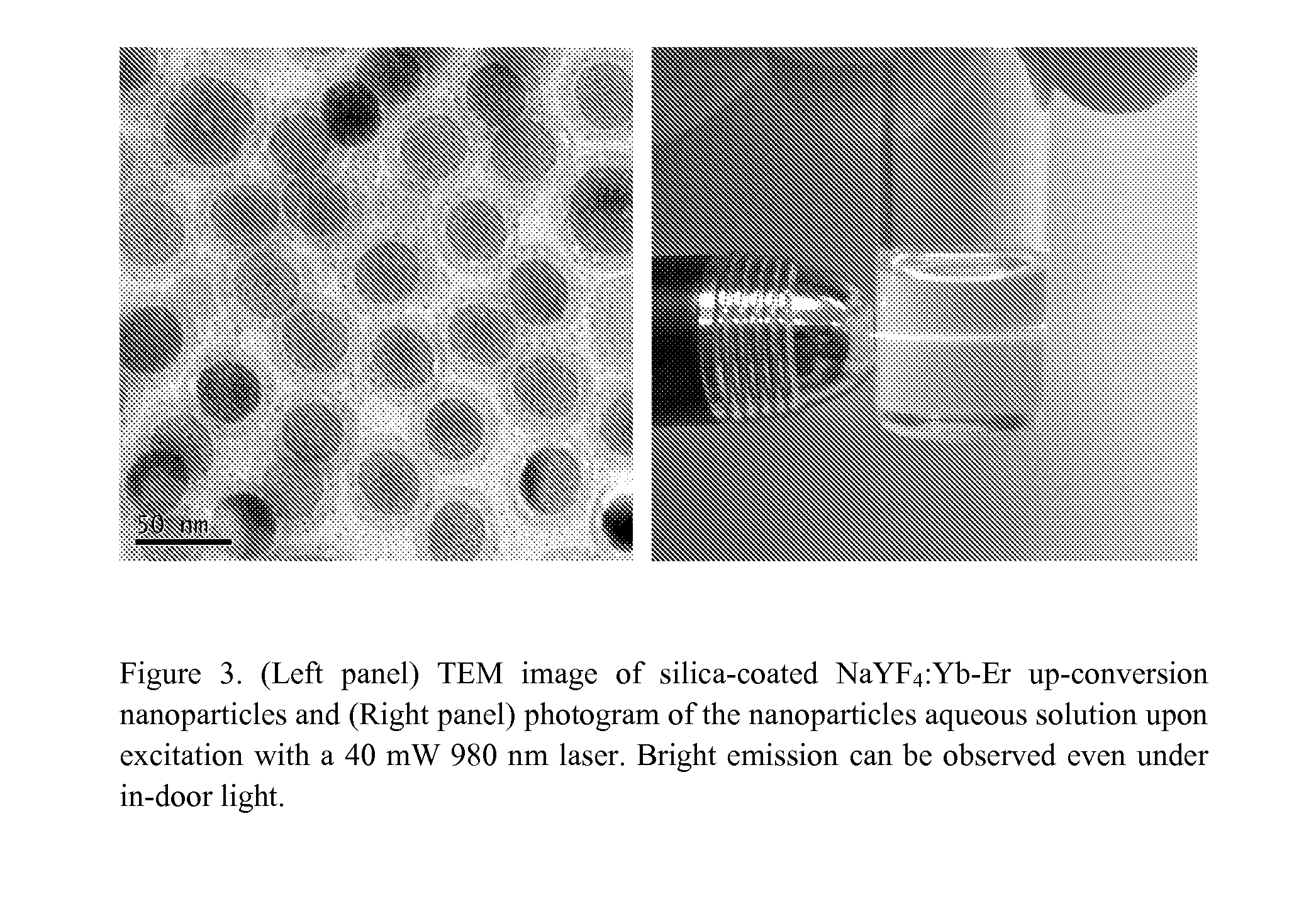Rare Earth-Doped Up-Conversion Nanoparticles for Therapeutic and Diagnostic Applications
a nanoparticle and nanoparticle technology, applied in the field of rare earth-doped up-conversion nanoparticles for therapeutic and diagnostic applications, can solve the problems of adversely affecting the quality of life of patients, the inability to deliver naked sirna to appropriate disease sites, and the issue of delivery and release of sirna in targeted cells
- Summary
- Abstract
- Description
- Claims
- Application Information
AI Technical Summary
Benefits of technology
Problems solved by technology
Method used
Image
Examples
example
[0102]Cellular transfection was performed using the silica-coated, rare earth-doped UCNPs with photosensitizers in the silica shell and modified with functional molecules, such as TSDT on the particle surface. A certain amount of the surface modified UCNP solutions were mixed with Cy3 labeled siRNA with the desired ratios to prepare siRNA-UCNP complexes. In vitro transfection of the novel delivery system was studied. As shown in FIG. 8, the two cell lines, HEK293 and HepG2, were used for studying the transfection efficacy under a fluorescence microscope, and the obtained results suggest an effective transfection of the cells.
[0103]Then, this delivery system was used to explore gene silencing efficiencies. We chose PC-3 cell line for some control experiments under different conditions for comparison of gene silencing efficiencies, and the results are shown in FIG. 9. It is noted that, when siRNA-UCNPs were used for the transfection of PC-3 cell line with IR irradiation on the cells, ...
PUM
| Property | Measurement | Unit |
|---|---|---|
| Thickness | aaaaa | aaaaa |
| Thickness | aaaaa | aaaaa |
| Composition | aaaaa | aaaaa |
Abstract
Description
Claims
Application Information
 Login to View More
Login to View More - R&D
- Intellectual Property
- Life Sciences
- Materials
- Tech Scout
- Unparalleled Data Quality
- Higher Quality Content
- 60% Fewer Hallucinations
Browse by: Latest US Patents, China's latest patents, Technical Efficacy Thesaurus, Application Domain, Technology Topic, Popular Technical Reports.
© 2025 PatSnap. All rights reserved.Legal|Privacy policy|Modern Slavery Act Transparency Statement|Sitemap|About US| Contact US: help@patsnap.com



